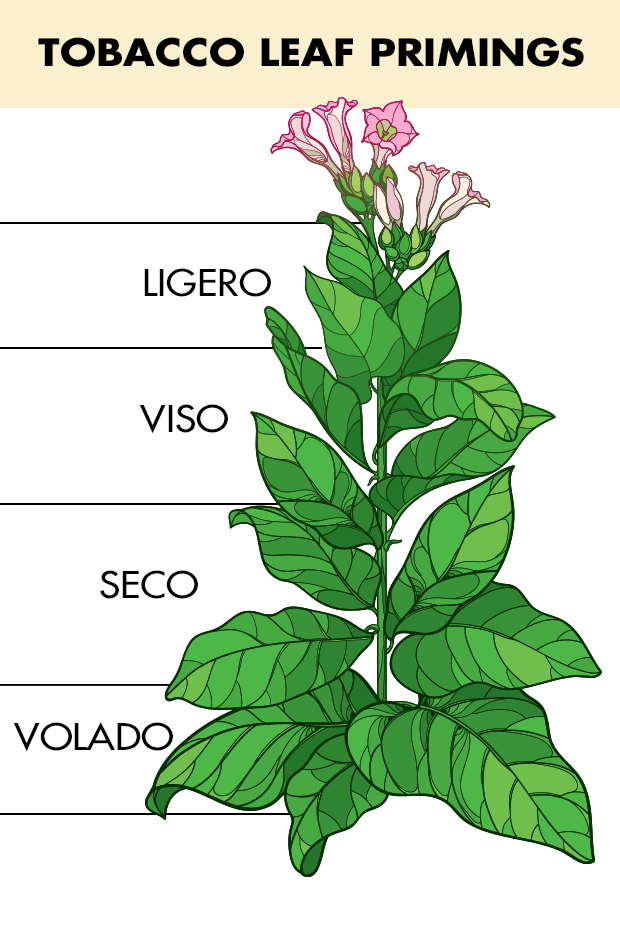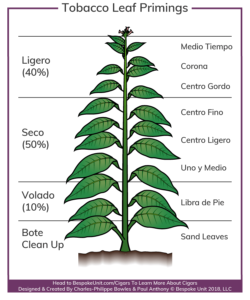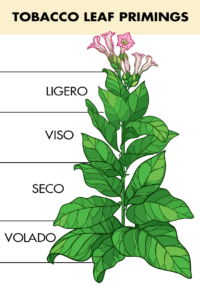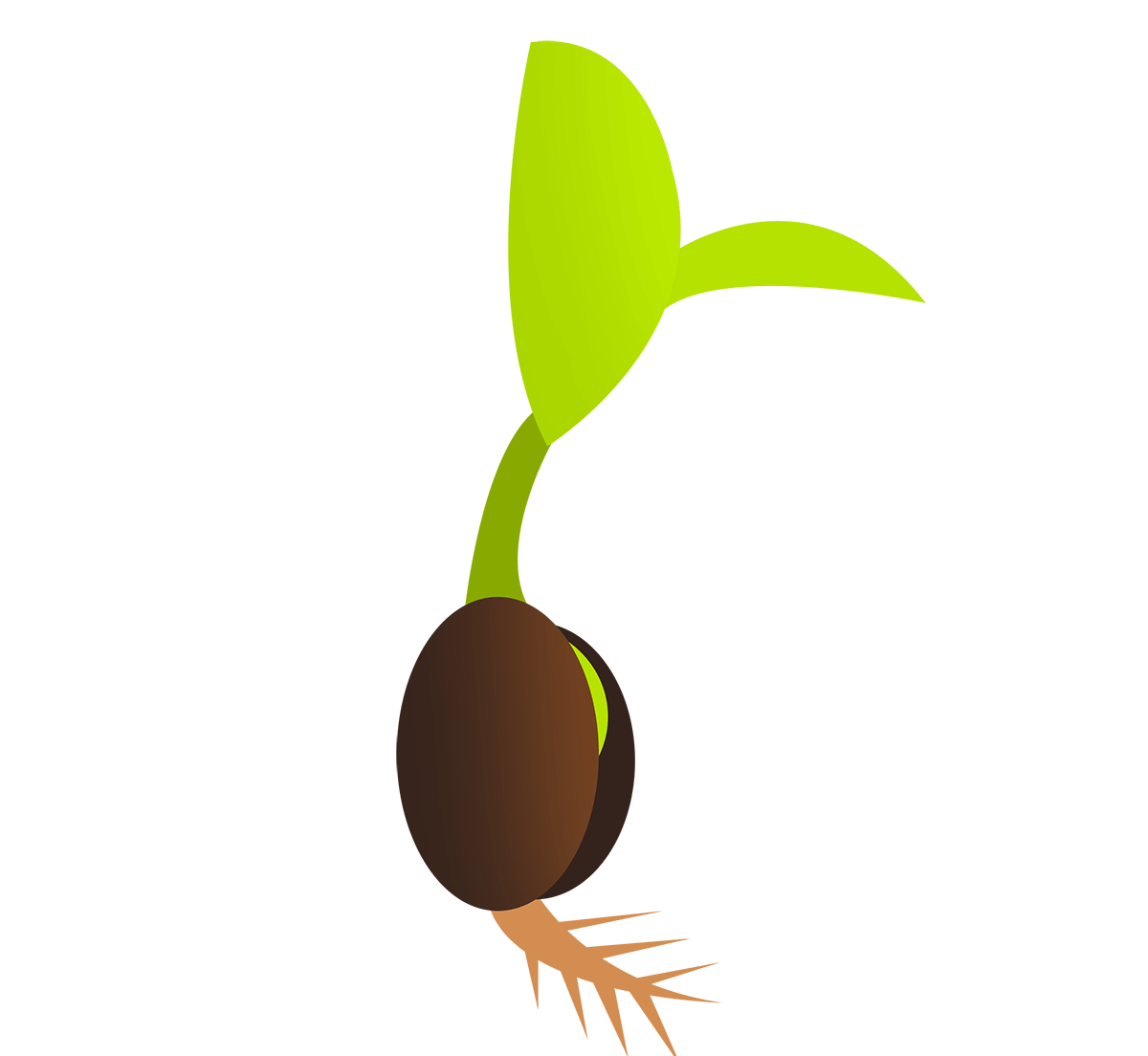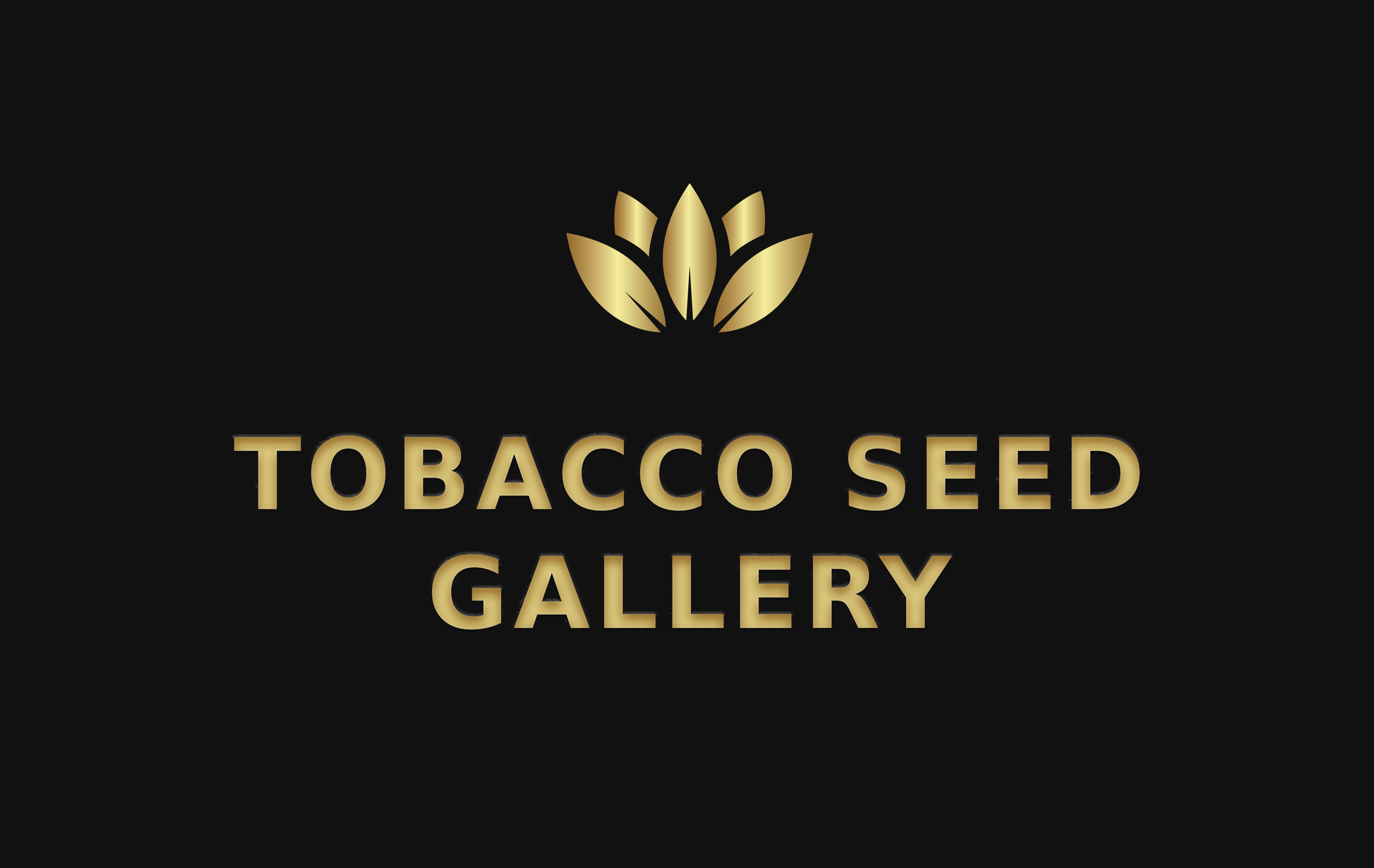Tobacco primings and their classification by location:
Abstract:
In this article I will share with you information on how the tobacco leaf is classified depending on its growth location on the plant. This article is mostly relevant to smoking tobaccos, regardless if they are intended for cigars, cigarettes, pipes or shisha.
Classification by location:
Before a smoking blend is created, tobacco leaves are classified based on species and priming. The priming classification of the tobacco depends solely on the location of the leaf on the plant prior to its removal. Generally, there are two schools of thought when it comes to tobacco priming classification:
- The general old school classification;
- The Davidoff classification;
Both of the above classifications break down the length of the plant into different primings, both classifications stay true to the plant anatomy starting from the bottom up as demonstrated below:
Figure 1 – Plant Anatomy (reference bespokeunit.com)
- The Old School Priming Classification:
Starting from the ground up the leaves are classified as follows:
- Mananitas or sand leaves – these two are the lowest quality leaves that are usually discarded since they are the closest to the ground where they are in contact with fertilizers etc. On most species these are the smallest leaves on the plant. Here at tobaccoseedgallery.com we remove these leaves early from out tobacco plantation, we boil them and we create natural pesticides. The plants from Glauca are removed and discarded as they are poisonous;
- Volado – coming from the word volatile – Volado are the leaves that represent 8-10% of the plant, these leaves burn well but have the lowest flavor. These are usually used for filler in cigars and generally represent the smallest amount that a blend will have;
- Seco – the Seco leaves are approximately 45-50% of the plant. These are leaves that are used as filler and binder in a cigar. The Seco leaf has the highest combustion rate of all the leaves on the plant, here is also where the taste profiles of the tobacco start picking up and becoming more earthy, mild and pleasant;
- Ligero – the Ligero leaves usually represent 35-40% of the tobacco plant. The Ligero leaves consist of 3 primings, namely, Centro Gordo, Corona and Medio Tiempo. Medio Tiempo is considered the cream of the crop. Additionally, Ligero are the thickest leaves (as they soak up most of the sun on the plant), they are the tastiest leaves but are also the lowest combustible leaves. Because of they’re strength Ligero is generally the lowest % in a blend;
- The Davidoff Priming Classification:
The Davidoff classification differs from the above as it introduces an additional priming between Seco and Ligero. The Visus priming:
Figure 2 – Tobacco Leaf Primings (source holts.com)
Visus (or Viso) is a priming that is thinner than Ligero and thicker than Seco. Its flavor is also stronger than Seco but lighter than Ligero. Generally this priming is removed from the plant after the Seco leaves, and of course, before the Ligero. Visus is a great filler tobacco.
On some species of tobacco Visus is much easier to identify than it is with most species (such as Criollo 98 and Piloto Cubano), where visually the leaf is a cross between the top tier Seco and the bottom Tier Ligero. In other species, the leaves are almost identical to the Ligero leaves and it takes an experienced eye to tell them apart.
I hope that this article about the identification and classification of leaf primings is helpful. As we at tobaccoseedgallery.com always say, we are always delighted in hearing the experience of fellow growers as well as sharing more information. So please feel free to contact us directly for any questions, remarks additional information.
